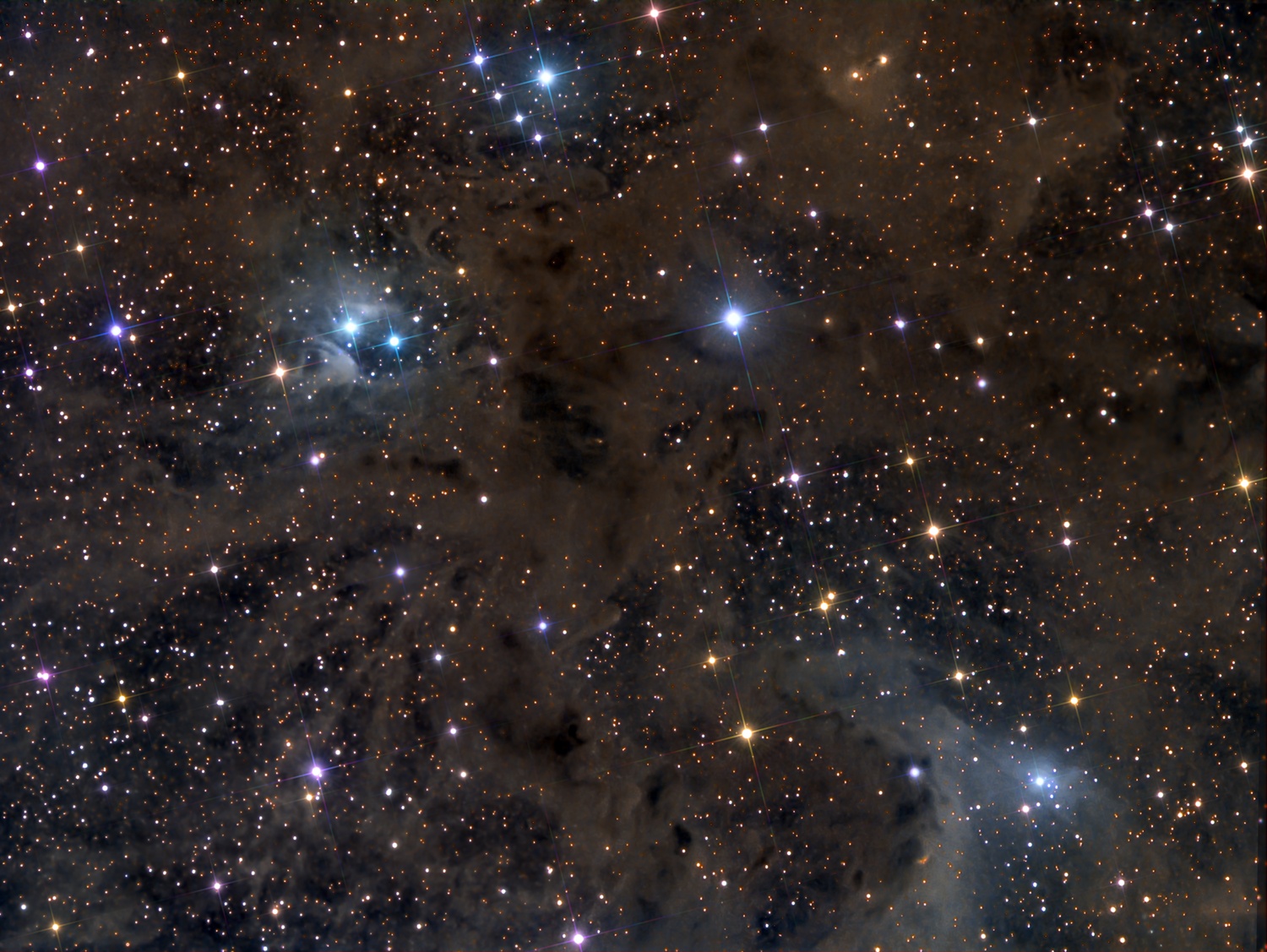 Stardust in Aries
Stardust in AriesExplanation: This composition in stardust covers almost 2 degrees on the sky, close to the border of the zodiacal constellation Aries and the plane of our Milky Way Galaxy. At the lower right of the gorgeous skyscape is a dusty blue reflection nebula surrounding a bright star cataloged as van den Bergh 13 (vdB 13), about 1,000 light-years away. At that estimated distance, the cosmic canvas is over 30 light-years across. Also surrounded by scattered blue starlight, vdB 16 lies toward the upper left, while dark dusty nebulae sprawl across the scene. Near the edge of a large molecular cloud, they can hide the newly formed stars and young stellar objects or protostars from prying optical telescopes. Collapsing due to self-gravity, the protostars form around dense cores embedded in the molecular cloud.
| << Previous APOD | Discuss Any APOD | Next APOD >> |
